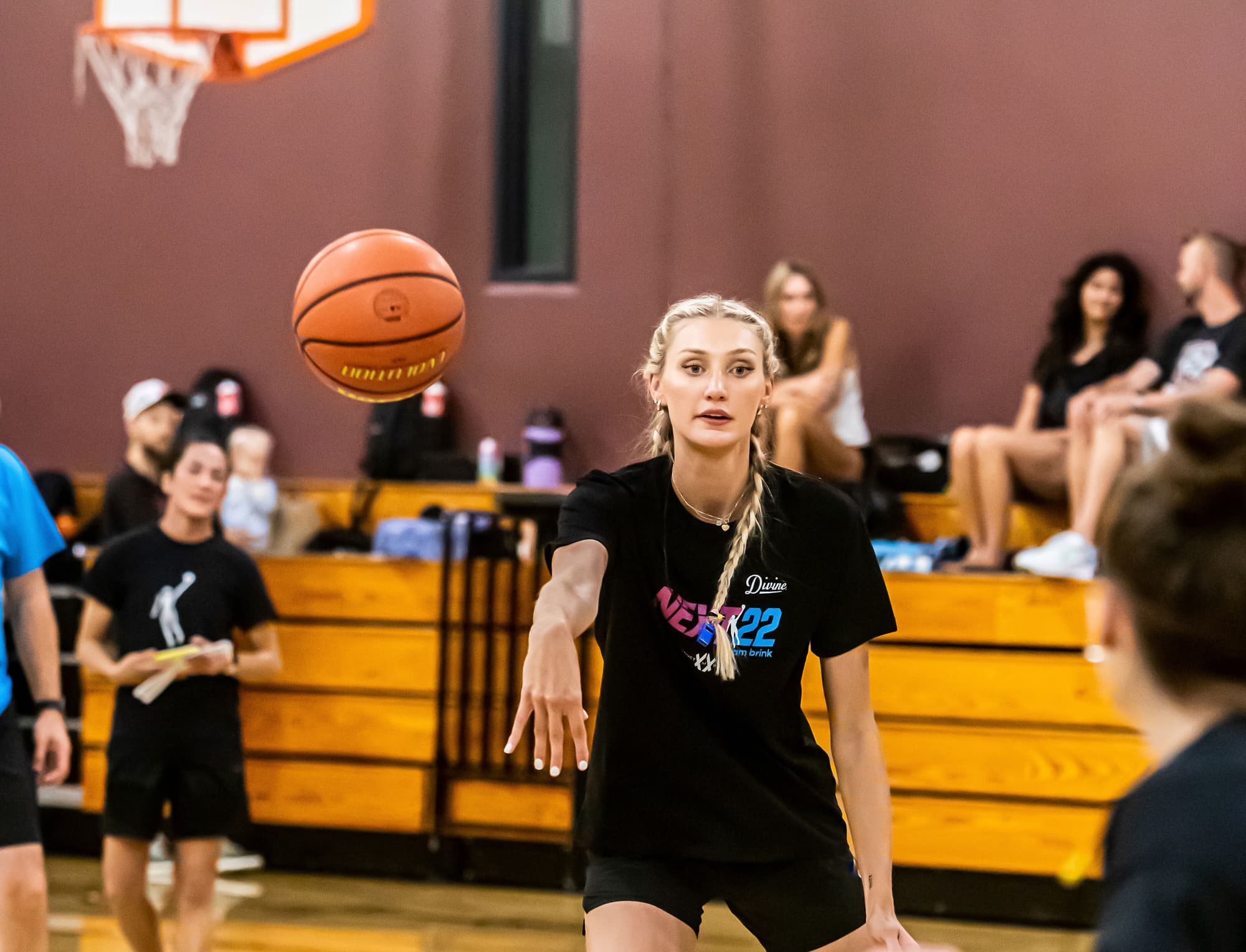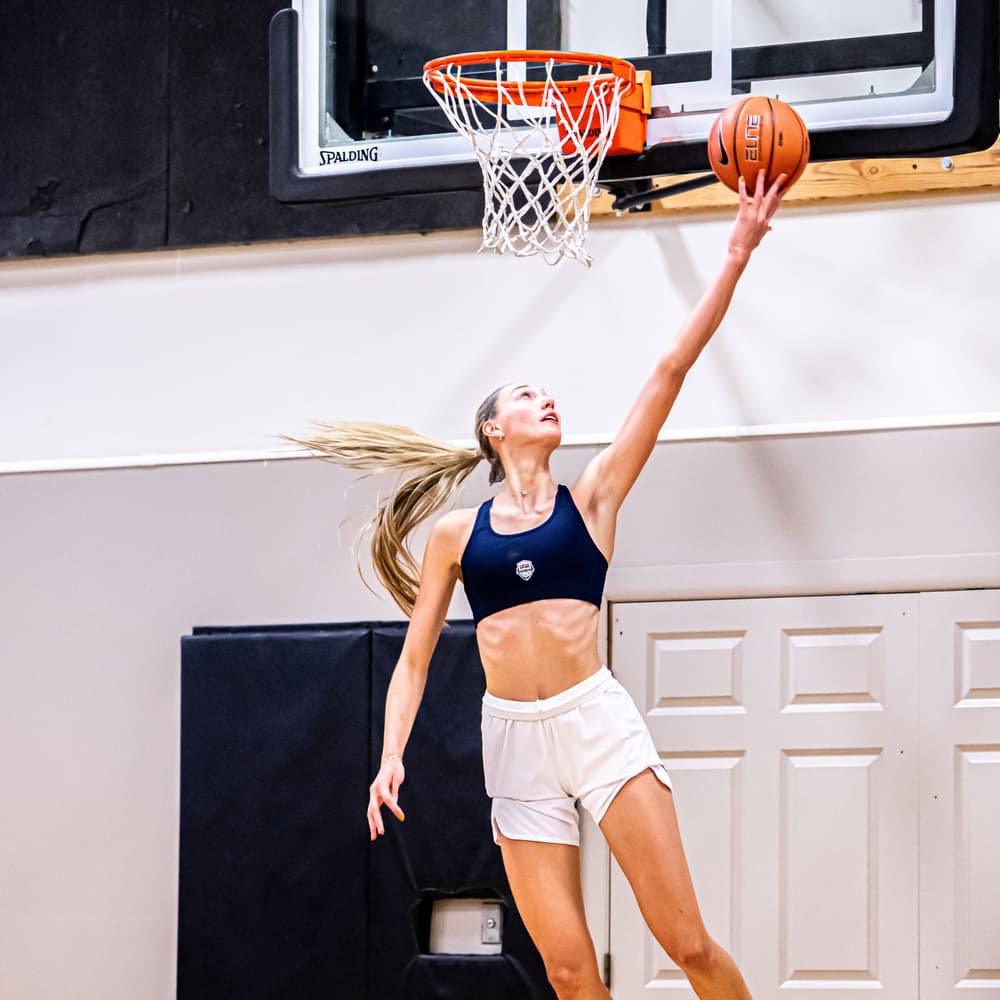Cameron Brink achieves visual freedom with the EVO implantable lenses
Basketball Player
Basketball Player

Vision struggles on and off the court
Cameron Brink, a star on the women’s basketball team of Stanford University, faced the daily struggles of glasses and contacts, impacting both her personal and professional life.

EVO ICL: the game-changer
Join her in experiencing the world with newfound clarity and confidence. For those on the fence about EVO ICL, Cameron passionately encourages,
"Talk to your eye doctor today. It's truly a life-changing procedure!"
Ready to embrace a life without the hassle of glasses and contacts? Discover the possibilities with EVO ICL. Call an EVO advisor today to schedule an appointment with an eye doctor near you, and embark on your own journey towards visual freedom!
Información sobre seguridad
Las ICL se han diseñado para la corrección/reducción de la miopía en adultos de entre 21 y 60 años con una graduación de entre −0,5 D y −20,0 D con o sin astigmatismo de hasta 6,0 D, y para la corrección/reducción de la hipermetropía en adultos de entre 21 y 45 años con una graduación de entre +0,5 y +16,0 D con o sin astigmatismo de hasta 6,0 D. Para asegurarse de que el cirujano use las ICL que mejor se adapten a su ojo, antes de la intervención refractiva, la miopía, la hipermetropía o el astigmatismo deberán llevar al menos un año estables. Las ICL mejoran la vista, por lo que no tendrá que usar gafas ni lentes de contacto. No obstante, las ICL no eliminan la necesidad de usar gafas para leer, incluso si no las ha usado antes. Las ICL implican el uso de una intervención refractiva alternativa, como la queratomileusis in situ asistida con láser (LASIK), la queratectomía fotorrefractiva (PRK) y las intervenciones de incisión, o de otros medios de corrección refractiva, como las gafas y las lentes de contacto. La implantación de las ICL se considera intervención quirúrgica y, como tal, implica riesgos posiblemente graves. A continuación, se indican las posibles complicaciones y reacciones adversas asociadas con la cirugía refractiva en general: intervenciones adicionales, desarrollo de cataratas, pérdida de la vista corregida, aumento de la presión intraocular, pérdida de células en la superficie interior de la córnea, conjuntivitis, inflamación aguda de la córnea, inflamación persistente de la córnea, endoftalmitis (infección ocular total), deslumbramientos y/o halos alrededor de las luces, hifema (presencia de sangre en el ojo), hipopión (presencia de pus en el ojo), infección ocular, desplazamiento de la ICL, edema macular, pupila no reactiva, glaucoma de bloqueo pupilar, inflamación ocular grave, iritis, uveítis, pérdida del humor vítreo y trasplante de córnea. Antes de contemplar la posibilidad de usar las ICL, debe someterse a una revisión oftamológica completa y hablar con su oftalmólogo sobre la implantación de ICL, especialmente por lo que respecta a los posibles beneficios, riesgos y complicaciones. Deben hablar también sobre el tiempo necesario para la recuperación tras la intervención.
Seleccionar su provincia
Latin America
Citas
1. Patient Survey, STAAR Surgical ICL Data Registry, 2018
2. Sanders D. Vukich JA. Comparison of implantable collamer lens (ICL) and laser-assisted in situ keratomileusis (LASIK) for Low Myopia. Cornea. 2006 Dec; 25(10):1139-46. Patient Survey, STAAR Surgical ICL Data Registry, 2018
3. Naves, J.S. Carracedo, G. Cacho-Babillo, I. Diadenosine Nucleotid Measurements as Dry-Eye Score in Patients After LASIK and ICL Surgery. Presented at American Society of Cataract and Refractive Surgery (ASCRS) 2012.
4. Shoja, MR. Besharati, MR. Dry eye after LASIK for myopia: Incidence and risk factors. European Journal of Ophthalmology. 2007; 17(1): pp. 1-6.
5a. Lee, Jae Bum et al. Comparison of tear secretion and tear film instability after photorefractive keratectomy and laser in situ keratomileusis. Journal of Cataract & Refractive Surgery , Volume 26 , Issue 9 , 1326 - 1331.
5b. Parkhurst, G. Psolka, M. Kezirian, G. Phakic intraocular lens implantantion in United States military warfighters: A retrospective analysis of early clinical outcomes of the Visian ICL. J Refract Surg. 2011;27(7):473-481.


